As a young boy growing up in Holland during the mid-1960s, I was introduced to Anne Frank and her tragic story. We were required to read her diary as well as attending the all-day field trip to the “Anne Frank House” in Amsterdam where Anne and her family hid from the Nazis until they were betrayed and deported ⏤ only her father survived.
There is a similar story in France, but it did not become known until 2008 when another diary was published, and the world got a first-hand glimpse into Nazi atrocities. The author, Hélène Berr, has since become known as the “French Anne Frank.”
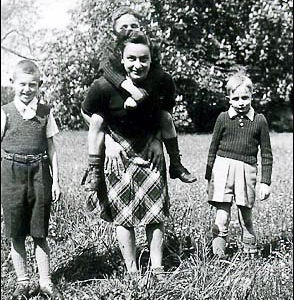
Did You Know?
Do you know how the term “Nazi” came about? Hitler’s political party was officially called the National Socialist German Workers’ Party or, Nationalsozialistische Deutsche Arbeiterpartei:
NAtionalsoZIalistische Deutsche Arbeiterpartei.
The German word “Reich” means “empire.” The first German Reich lasted 844 years and was commonly known as the Holy Roman Empire until it was dismantled by Napoléon in 1806. The second Reich lasted approximately 48 years between 1871 and the end of World War I. Hitler’s Third Reich lasted twelve years with horrifying consequences which unfortunately, some aspects have endured to this day.
Hélène Berr (1921-1945) was born into an upper middle-class French family. In addition to Hélène, Raymond and Antoinette Berr’s family consisted of Jacqueline (1915-1921), Yvonne (1917-2001), Denise (1919-2011) and Jacques (1922-1998). The family lived in Paris at 5, avenue Elisée-Reclus until the French police knocked on their door in March 1944.
Hélène began her diary on 7 April 1942. She ceased writing seven months later on 28 November 1942 but resumed once again on 25 August 1943. There are many entries which document the actions and events perpetrated by Vichy and the Nazis in Paris and France. Reading her diary, you will confront Hélène’s emotions towards the policies of Vichy and the Nazis as well as personal issues. Unlike Anne Frank, we won’t hear from Hélène until 2008 when her diary is published.
Hélène writes about many issues over a two-year span, but I thought I’d give you a glimpse into a specific period of time when Hélène, her friends, and many French citizens began to see the Nazis (and Vichy) for what they really were. It is the two-month period leading up to and right after the rafle du Vél’ d’Hiv or, the Grand Roundup of Jews on 16/17 July 1942. Here are Hélène’s words (I have edited ⏤ primarily eliminating⏤ certain dated entries, sentences or paragraphs for brevity sake. I have not edited her spelling, punctuation, or grammar). My comments are in italics and are meant to give you a point of reference.
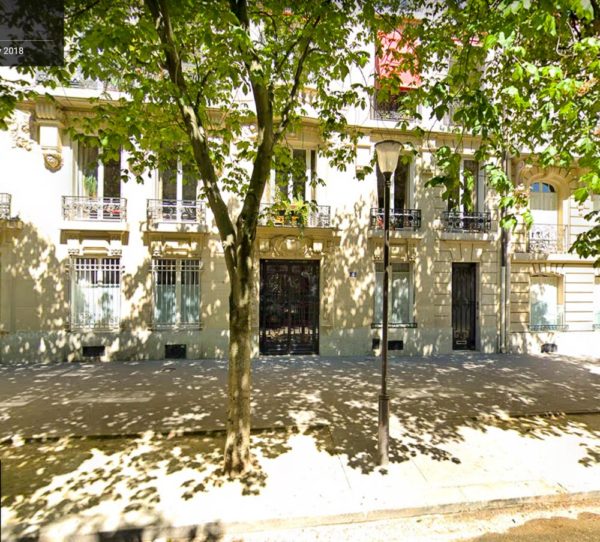
The Journal of Hélène Berr
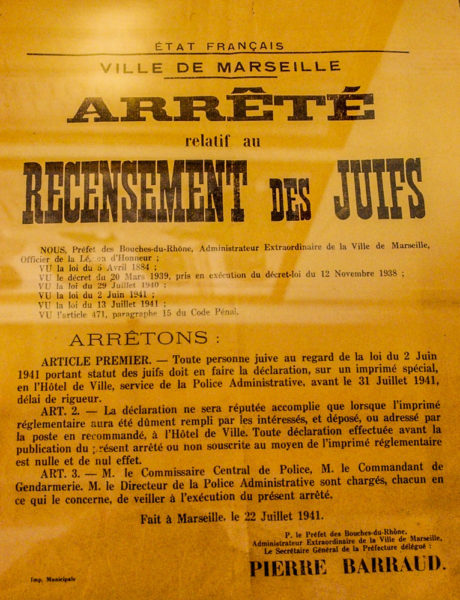
1 June 1942
(The Germans and Vichy have decreed all Jews must wear the Star of David.)
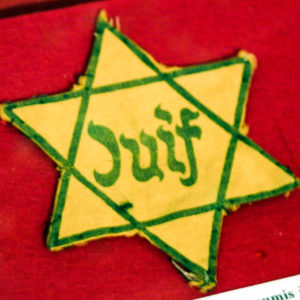
Maman came to tell me the news about the yellow star, and I pushed her away, saying: “I’ll talk about it later.” But I knew there was something unpleasant at the back of my mind.
(“Maman” is an affectionate term used for French mothers.)
24 June 1942
(M. Duchemin) began by saying: “Well, Hélène, I saw your father this morning and he left a note for you. I realized that they had come and arrested Papa. And the note, . . . in Papa’s neat hand: “A police officer is taking me to rue de Greffulhe and from there to the German office. I do not know why.”
(8, rue Greffulhe was the site of the ‘Police aux Questions Juives’ – PQJ – or, the Jewish Affairs Headquarters. The German office is likely the Gestapo headquarters located at 84, avenue Foch.)
The officer said that Papa would have been released had his star been correctly stitched on, because the interrogation at avenue Foch had gone well. The officer went on insisting that the press studs were what prompted Papa’s internment: “At the Drancy camp all the stars are stitched on.” So that made us realize that he was on his way to Drancy.
(Mme Berr purposely did not stitch her husband’s star onto his clothing so that it could easily be transferred to other pieces of clothing. Drancy was a detention camp outside Paris and the last stop before deportation to Auschwitz.)
(Hélène and her mother visit the police station.)
It was a rather comical scene, with Papa in the role of prisoner and the authorities expressing copious respect and sympathy. But that was because there were no Germans present. The full meaning, the sinister meaning, of it all was not apparent because we were among French people.
29 June 1942
(Hélène has begun wearing her yellow star after resisting doing so for many weeks.)
I suddenly became aware that a man was approaching me, and I came out of my meditation. He offered me his hand and said, loudly: “A French Catholic shakes your hand . . . and when it’s over, we’ll let them have it!”
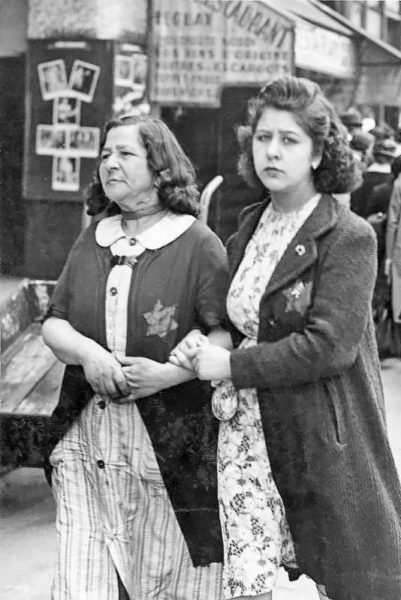
30 June 1942
I can’t manage to grasp it properly. I know Papa is at Drancy. I know that last week there was a living, smiling, active Papa here at home. I can’t reconcile the two things.
She came upstairs just after the phone call. She was a bag of nerves. Suddenly she exploded. She had to tell us something she’d been told. She was ready to burst, not to burst into sobs but to burst with words, and with irritation. It’s about an order for July 15 to lock up all Jews in concentration camps.
(“She” was a family friend and the issue was about the pending Grand Roundup known as The Vél’ d’Hiver roundup of 13,000 Jews which was held on 16 & 17 July; all of the arrested, including 4,000 children, were eventually deported to Auschwitz ⏤ only 400 returned.)
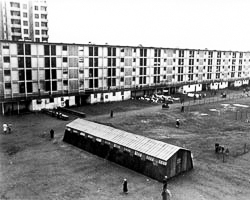
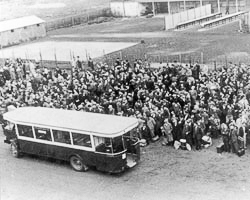
4 July 1942
Dannecker has ordered the evacuation of Hôpital Rothschild. All the patients, people who were operated on yesterday, have been sent to Drancy. In what state? With what care? It is atrocious.
(Theodor Dannecker was the Nazi officer in Paris responsible for deporting French Jews; each occupied country had an official SS officer or, “Judenreferat,” assigned to it for the purpose of implementing the “Final Solution.” Dannecker, a ruthless and virulent anti-Semite, reported directly to Adolf Eichmann.)
6 July 1942
Denise, Nicole, and I all went to the U.G.I.F. in rue de Téhéran to register with this charity. Life has become very peculiar.
(The U.G.I.F. was a Jewish run charity organization mandated by the Germans and Vichy for the purpose of monitoring and keeping track of Jews; it also provided orphanage services for children whose parents were deported to Auschwitz and other concentration camps. The U.G.I.F. was nothing more than an organization which registered Jews and provided the Nazis, Vichy, and the French police with data on the Jews including where they lived. In other words, the U.G.I.F. was a trap. Hélène volunteered at the U.G.I.F. but soon became aware she was aiding an organization which collaborated with the Nazis and Vichy. Volunteers were given exempt status for deportation but in the end, they too would board the cattle cars bound for Auschwitz.)
9 July 1942
I don’t know if I’ll ever see any of the people who are leaving me again.
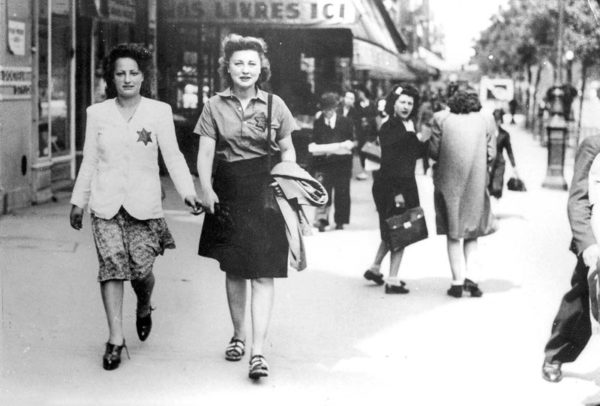
10 July 1942
A new order’s been issued today, about the métro. I was about to get into the front carriage when I suddenly realized that the harsh words of the inspector were addressed to me: “You there, in the other carriage.” When I got into the last carriage, tears were pouring from my eyes, tears of rage, and of protest against this brutality.
(The Préfet of Paris issued the order which forbade Jews to ride in trains or the Métro in any car other than the last one. It was issued without any public announcement.)
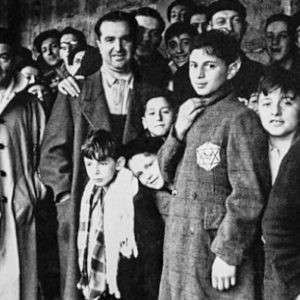
14 July 1942
Will I not wake up one morning and realize that all this is just fantasy, and that I’ve lost my chance to be happy?
15 July 1942
Something is brewing, something that will be a tragedy, maybe the tragedy (Hélène’s italics). M. Simon came round this evening to warn us that he’d been told about a roundup for the day after tomorrow, twenty thousand people. Without saying so, everybody disapproves of our staying.
(Many of Hélène’s friends are leaving for the countryside or the Unoccupied or Free Zone including her sisters.)
18 July 1942
I am resuming this diary today. On Thursday I thought life might have ground to a halt. But it has gone on. It has resumed.
(Hélène is referencing Thursday, 16 July.)
I had been to see Mme Biéder, that poor mother of eight whose husband has been deported. Mme Biéder is like a hunted animal. In Montmartre there were so many arrests that the streets were jammed. Mothers have been separated from their children. In Mlle Monsaingeon’s neighborhood, a whole family, the father, the mother, and five children, gassed themselves to escape the roundup. One woman threw herself out of a window. Apparently several policemen have been shot for warning people so they could escape. The kids will never find their parents again. Margot’s cousin was caught at the demarcation line and thrown into jail after they interrogated her eleven-year-old son for hours to get him to confess that she was Jewish; she has diabetes, and four days later she was dead.
(Besides the Marais District, Montmartre had a large population of Jews and the demarcation line she references divides the Occupied Zone and the Unoccupied or, Free Zone. It was French police who organized the roundup and made the arrests.)
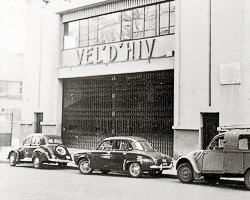
A new order, number 9: no admittance to shops except between 3:00 and 4:00 (a time when all the small ones are shut). Maman has just phoned Mme Katz: tomorrow morning there’ll be a mass departure from Drancy; . . .
François, who came round this evening, told us that the Vélodrome d’Hiver, where they locked up thousands of women and children, there are women giving birth, infants bawling, all of them lying on the ground with Germans guarding them.
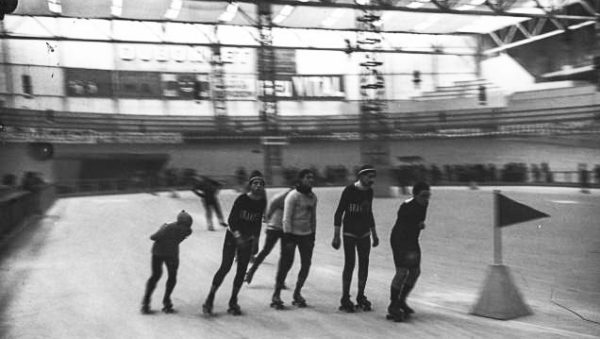
(Hélène is wrong here; in fact, it was French police and not Germans who guarded the arrested victims in the velodrome. Seventy-one percent of the arrested were women and children. François Bernheim was a very good friend of Sylvia Beach, the owner of Shakespeare & Company bookstore. François was deported and died at Auschwitz.)
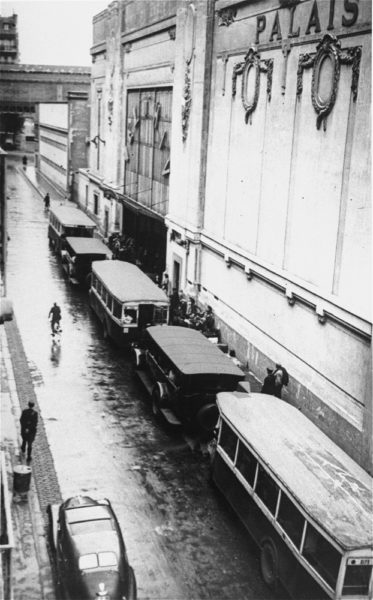
19 July 1942
One woman lost her mind and threw her four children out of the window. The policemen worked in teams of six, with electric flashlights. M. Boucher gives us news of the Vélodrome d’Hiver. Twelve thousand people are incarcerated, it’s hell. Many deaths already, sanitary facilities blocked up.
(No sanitary facilities were available, and the only food was provided by Quakers and the Red Cross. Only a handful of doctors were allowed in, and water came out of one tap.)
Since French workers refused to leave for Germany, Laval sold Polish and Russian Jews, thinking nobody would protest. The workers are disgusted and even less inclined to go. There’s yet a third consignment of Jews (Turks, Greeks, and Armenians), and after that, it will be French women.
(The first French Jews to be deported were immigrants and those who were not born in France. Then the Nazis and the French police came for the women, the old, the young, and the Jews who thought they were safe because they had been born in France and were French citizens.)
21 July 1942
Other details, from Isabelle: fifteen thousand men, women, and children at the Vélodrome d’Hiver, so crowded together they can only squat, they get trodden on. Not a drop of water, the Germans have cut off the water and gas mains. Among them are sick people hauled out of hospital, people with tuberculosis wearing “contagious” signs round their necks. Women are giving birth right there. No medical help. No medicines, no bandages. In any case, first aid is being stopped tomorrow. They will probably all be deported. On Thursday, Mme Carpentier saw two trains at Drancy in which men and women had been stacked like cattle, without even any straw, for deportation.
(I’ll stop here.)
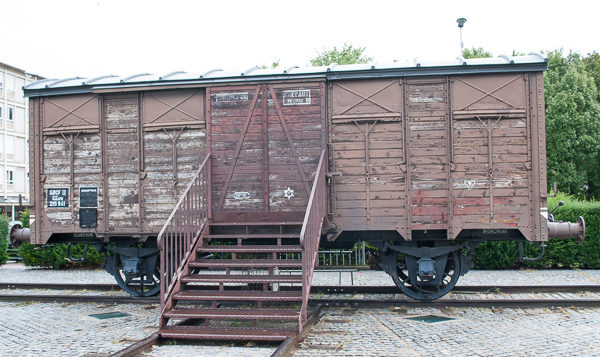
February 1944 To April 1945
By February 1944, Hélène knew she would likely be arrested and deported.
The last written entry on 15 February 1944 were Hélène’s final words: “Horror! Horror! Horror!”
On the morning of 8 March 1944, Hélène and her parents were arrested in their apartment and taken to Drancy. (Raymond had perviously been released from Drancy). On 27 March, Hélène’s twenty-third birthday, the Berr family was deported. Raymond was sent to Auschwitz-Monowitz III (the labor camp) where, in September, he would be murdered. Hélène and her mother were sent to the extermination camp, Auschwitz-Birkenau. Antoinette was gassed on 30 April and eight months later, Hélène was transferred to Bergen-Belsen.
Suffering from typhus, Hélène was beaten to death in April 1945 for failing to get out bed just days before the camp was liberated. She died within weeks after Anne Frank passed away from typhus at the same camp. Hélène’s sisters and brother would survive by fleeing to the Unoccupied Zone (Jacques joined the French Resistance).
Post-Script to Hélène’s Diary
Approximately 76,000 French Jews were deported to Auschwitz between 1942 and 1944. More than 11,000 of them were children and 2,000 were under the age of six. Working with Suzanne Spaak, Hélène was directly responsible for saving the lives of approximately 600 children. The Vichy Prime Minister, Pierre Laval, always maintained that deporting children was the “humanitarian” thing to do (Laval was executed for treason after the liberation).
As Hélène wrote her diary, she gave the pages one-by-one to Andrée Bardiau, the Berr family’s cook, in case she did not survive. After the war, Mme Bardiau turned over the handwritten manuscript to Hélène’s brother, Jacques, who had it typed up. He tracked down Hélène’s fiancé, Jean Morawiecki and gave the manuscript to him. Morawkiecki kept it hidden away in a cupboard as it became a heavy burden for him over all the years (Jean was consumed with guilt for leaving her; he had fled to England to join General Charles de Gaulle and the Free French Forces). Mariette Job, Hélène’s niece (Denise’s daughter), had known about the diary since 1946 and when she learned it had been given to Morawiecki, she tracked down the elderly man and learned about the war years from him (her mother was too distraught to ever talk about it). Morawiecki gave the original manuscript to Mariette who had it translated.
After the 16/17 June 1942 roundup, Hélène wrote in her diary, “I’m noting the facts, in haste, so as not to forget them, because we must not forget.”
Mariette published the diary in 2008 and donated the original diary to the Mémorial de la Shoah in Paris so that Hélène’s wish that “we must not forget” will forever be honored.
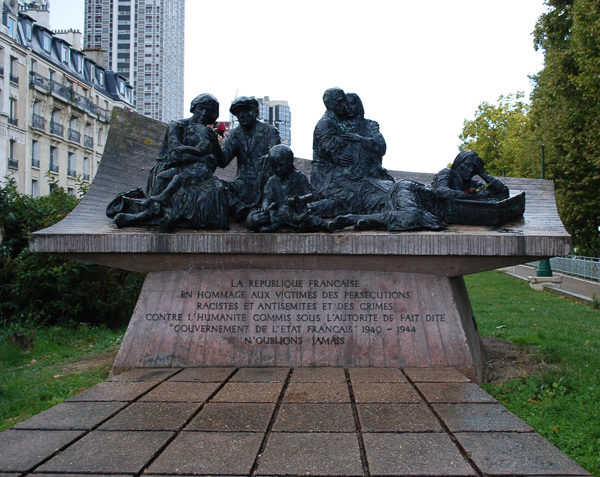
Recommended Reading and Viewing
Berr, Hélène. Translated by David Bellos. The Journal of Hélène Berr. New York: Weinstein Books, 2008.
Nelson, Anne. Suzanne’s Children: A Daring Rescue in Nazi Paris. New York: Simon & Schuster, 2017.
Sebba, Anne. Les Parisiennes: How the Women of Paris Lived, Loved and Died in the 1940s. London: The Orion Publishing Group Ltd, 2016.
Hélène was a gifted writer. She was a student at the Sorbonne, an accomplished musician, and a young woman of extreme intellect. She was a humanitarian working to save the lives of Jewish children. The snapshot I’ve given you in this blog doesn’t begin to do justice to her diary and the messages she sends us.
Hélène Berr would cross paths with Suzanne Spaak through their mutual dedication and commitment in saving the lives of hundreds of Jewish children. After witnessing the beating of a Jewish man, Hélène joined a secret organization, Entr’aide Français Israélite, dedicated to saving Jewish children from being deported. Suzanne Spaak and her resistance activities are the subjects of a future blog, Suzanne’s Children (due out on 27 April 2019).
What’s New With Sandy And Stew?
We seem to be making some headway with respect to publicity about our books. I’m grateful to Laura Tichy-Smith for writing an article on my presentations at the Florida Gulf Coast University’s Renaissance Academy. The article was published in The News-Press Cape Life Sunday edition on 6 January 2019. We also got great exposure in The Charlotte Sun on 20 January when Rick Ramos wrote about my January presentation titled, Rendezvous with the Gestapo.
Speaking of which, the January presentation went extremely well. There wasn’t an empty seat left in the house. One member of the audience was a woman whose father was on a B-17 shot down over France in 1944. He was with the 306th Bomb Group (for those of you who read my blog, Rendezvous with the Gestapo, you’ll remember that S/Sgt. Hilton Hilliard was with the 305th Bomb Group). It was interesting to hear about her father’s story.
I hope some of you can join us for our next two presentations in Punta Gorda, Florida at the Herald Center in March. The first one, Marie Antoinette’s Last Ride, will be on 19 March while the final presentation of the season will be a week later on 26 March and the topic will be Amazing Women of the French Resistance. We’re planning on a summer presentation called Jacques the Ripper and Other Paris Evils.
Someone Is Commenting On Our Blogs
Thank you to Heather C. for contacting us regarding the two revolution books (Where Did They Put the Guillotine?). Her comments about the quality and content is greatly appreciated! Heather is an author embarking on writing a new book and we wish her all the luck with her new project.
If there is a topic you’d like to see a blog written about, please don’t hesitate to contact me. I love hearing from you so keep those comments coming.
Why Would You Want To Buy Our “Walks Through History” Books?
Simple.
You like to travel and experience history and historical events. You like to see original buildings that had a significant impact on the people and events of the history you’re engaged with. You want to know the stories behind the brick and mortar in front of you.
The walking tour books are meticulously researched so you can go directly to those sites and learn about the building’s history as well as an introduction to some of the more interesting people associated with it.
Thank You
Sandy and I appreciate you visiting with us. We have some exciting things on the horizon and we’ll keep you updated as we go along.
Share This:
Follow Stew:
Find Stew’s books on Amazon and iBooks.
Please note that we do not and will not take compensation from individuals or companies mentioned or promoted in the blogs. Walks Through History
Walks Through History
Copyright ©2019 Stew Ross
